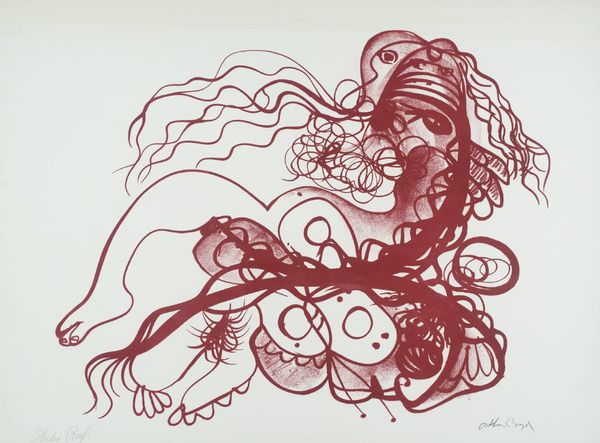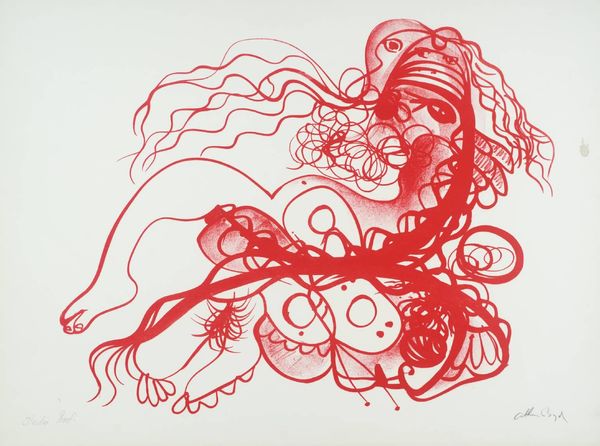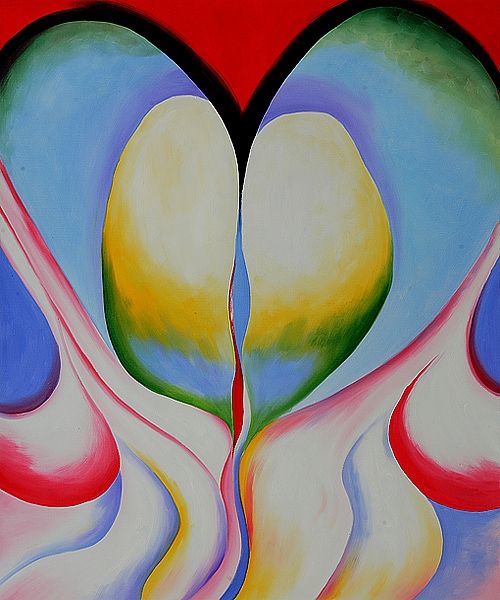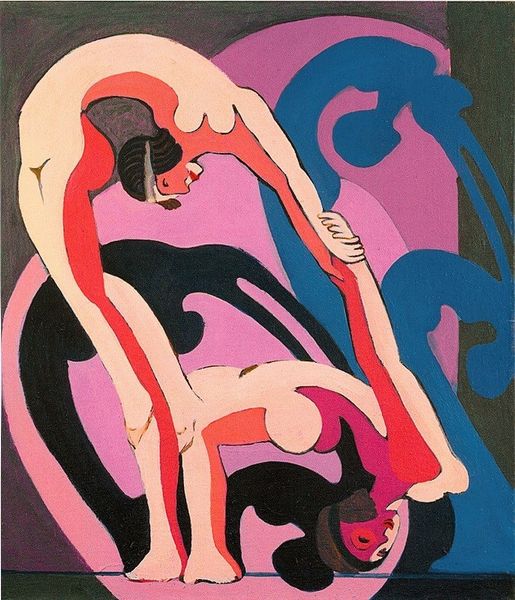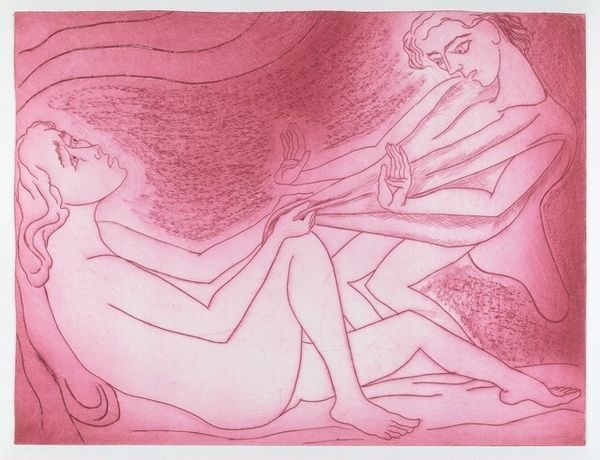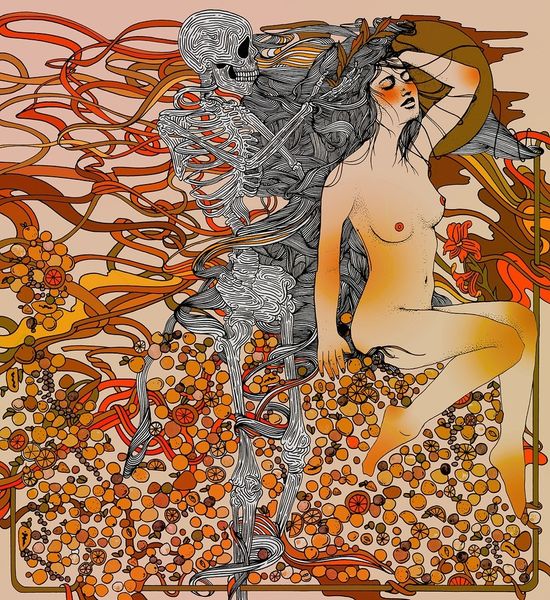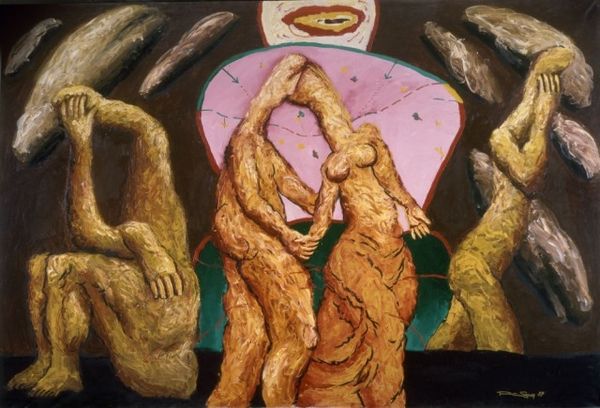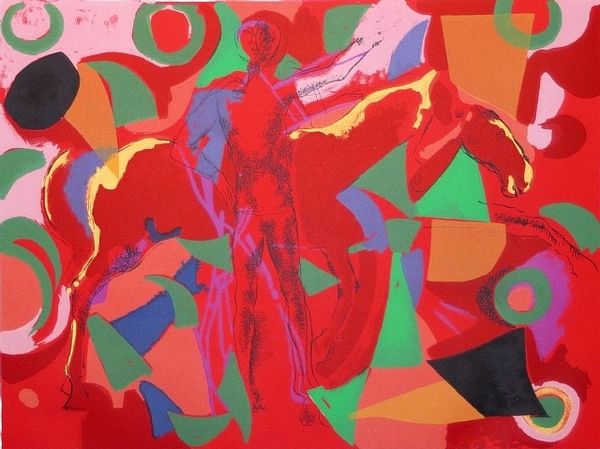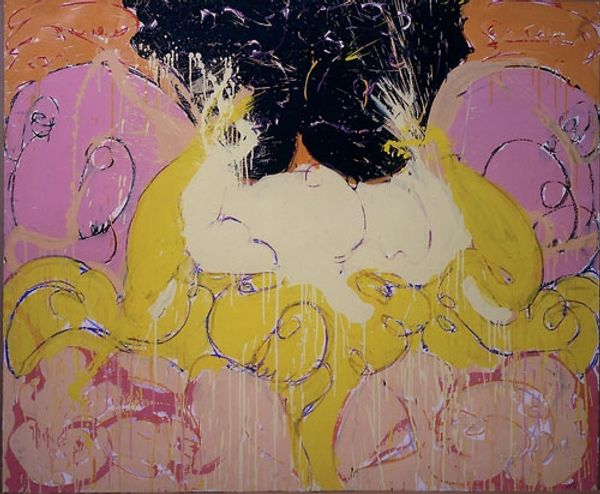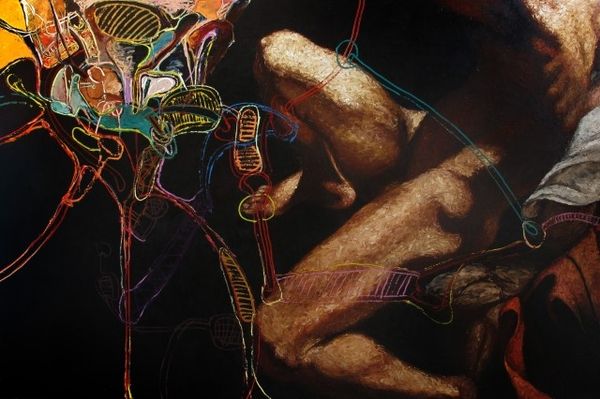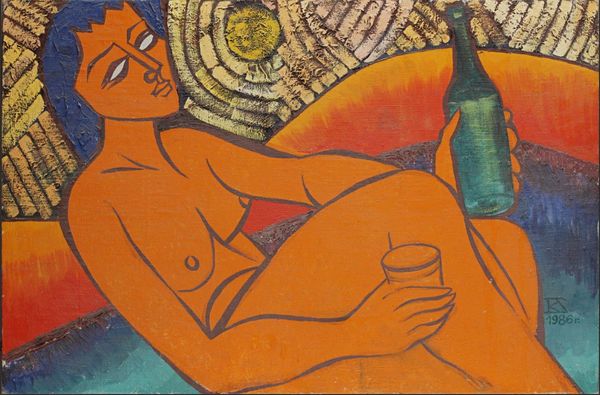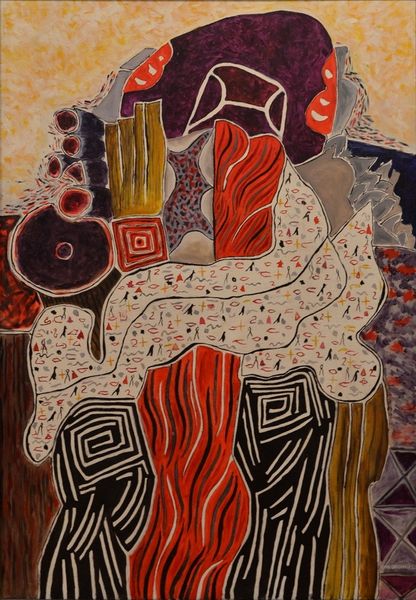
mixed-media, tempera, painting, ink
#
portrait
#
mixed-media
#
organic
#
abstract painting
#
tempera
#
painting
#
figuration
#
ink
#
pink
#
feminist-art
#
abstract-art
#
line
#
abstract art
#
modernism
Copyright: Judy Chicago,Fair Use
Curator: Here we have Judy Chicago’s “Birth Tear-Tear,” completed in 1985 using mixed media including tempera and ink. It’s a powerful work, characteristic of her feminist art. Editor: The initial impact is overwhelming; there’s such an intense and concentrated visual layering of figures and abstract forms, all rendered in variations of pink. It’s visually arresting but slightly claustrophobic. Curator: That sense of confinement seems quite deliberate. Chicago’s work often directly confronts previously taboo subjects, exploring the female experience, giving visibility to things that had historically been suppressed or ignored in art. Editor: The linear quality is fascinating. The artist guides us to understand the artwork through form. I feel as though the shapes have a specific purpose that adds complexity. Curator: The image centers on the painful, often ignored, reality of childbirth, representing it through a visceral and emotional lens. It breaks away from idealized representations and places the laboring woman at the forefront. Editor: It’s remarkable how the different tones of pink create a feeling of depth, even though the style is clearly abstract. Curator: That color palette ties to Chicago’s commitment to subverting expectations about femininity while addressing the politics inherent in women’s representation in visual culture. Editor: Looking at the figures more closely, it’s evident how the lines are carefully constructed to represent emotions such as pain and suffering. The use of color reinforces such concepts. Curator: It invites the viewer to consider childbirth not just as a biological process, but as a significant cultural and social experience. It allows new audiences to find resonance in what’s taking place. Editor: What initially felt overwhelming slowly reveals a calculated rhythm and depth. Curator: And that layered effect speaks directly to the multi-dimensional nature of birth and motherhood as lived experiences, which are difficult to portray from an outside, detached perspective. Editor: Thinking about its place in Chicago’s oeuvre really enhances how we read the visual construction here. Curator: Indeed. Seeing the work within the context of feminist art history really highlights Chicago’s pioneering efforts in visualizing female experience.
Comments
No comments
Be the first to comment and join the conversation on the ultimate creative platform.
